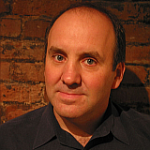By JOE FLOWER
Picture, if you will, a healthcare sector that costs less, whose share of the national economy is more like it is in other advanced economies—let’s imagine 9% or 10% rather than 18% or 19%.
A big part of this drop is a vast reduction in overtreatment because non-fee-for-service payment systems are far less likely to pay for things that don’t help the patient. Another part of this drop is the greater efficiency of every procedure and process as providers get better at knowing their true costs and cutting out waste. The third major factor is that new payment systems and business models actually drive toward true value for the buyers and healthcare consumers. This includes giving a return on the investment for prevention, population health management, and building healthier communities. This incentive would reduce the large percentage of healthcare costs due to preventable and manageable diseases, trauma, and addictions.
Picture, if you
will, a healthcare sector in which prices are real, known, and reliable.
Price outliers that today may be two, three, five times the industry median
have rapidly disappeared. Prices for comparable procedures have normalized in a
narrower range well below today’s median prices. Most prices are bundled, a
single price for an entire procedure or process, in ways that can be compared
across the entire industry. Prices are guaranteed. There are no circumstances
under which a healthcare provider can decide after the fact how much to charge,
or a health insurer can decide after the fact that the procedure was not
covered, or that the unconscious heart attack victim should have been taken to
a different emergency department farther away.
Picture a
well-informed, savvy healthcare consumer, with active support and incentives
from their employers and payors, who is far more willing and eager to find out what their choices are and exercise that
choice. They want the same level of service, quality, and financial choices
they get from almost every other industry. And as their financial burden
increases, so do their demands.
Picture a reversing
of consolidation, ending a providers’ ability to demand full-network
contracting with opaque price agreements—and encouraging new market entrants
capable of facilitating a yeasty market for competition. Picture growing
disintermediation and decentralization of healthcare, with buyers increasingly
able to act like real customers, picking and choosing particular services based
on price and quality.
Picture an
industry whose processes are as revolutionized by new technologies
as the news industry has been, or gaming, or energy. Picture a healthcare
industry in which you simply cannot compete using yesterday’s technologies—not
just clinical technologies but data, communications, and transaction
technologies.
Continue reading…









 CMS recently announced the inaugural class of Next Generation ACOs – the latest accountable care models which includes higher levels of financial risk and greater opportunity for reward than have been available within the Pioneer Model and Shared Savings Program. CMSs goal is to test whether these greater financial incentives, coupled with tools to support better patient engagement and care management, will improve health outcomes and lower costs for Medicare fee-for-service (FFS) beneficiaries.
CMS recently announced the inaugural class of Next Generation ACOs – the latest accountable care models which includes higher levels of financial risk and greater opportunity for reward than have been available within the Pioneer Model and Shared Savings Program. CMSs goal is to test whether these greater financial incentives, coupled with tools to support better patient engagement and care management, will improve health outcomes and lower costs for Medicare fee-for-service (FFS) beneficiaries.








